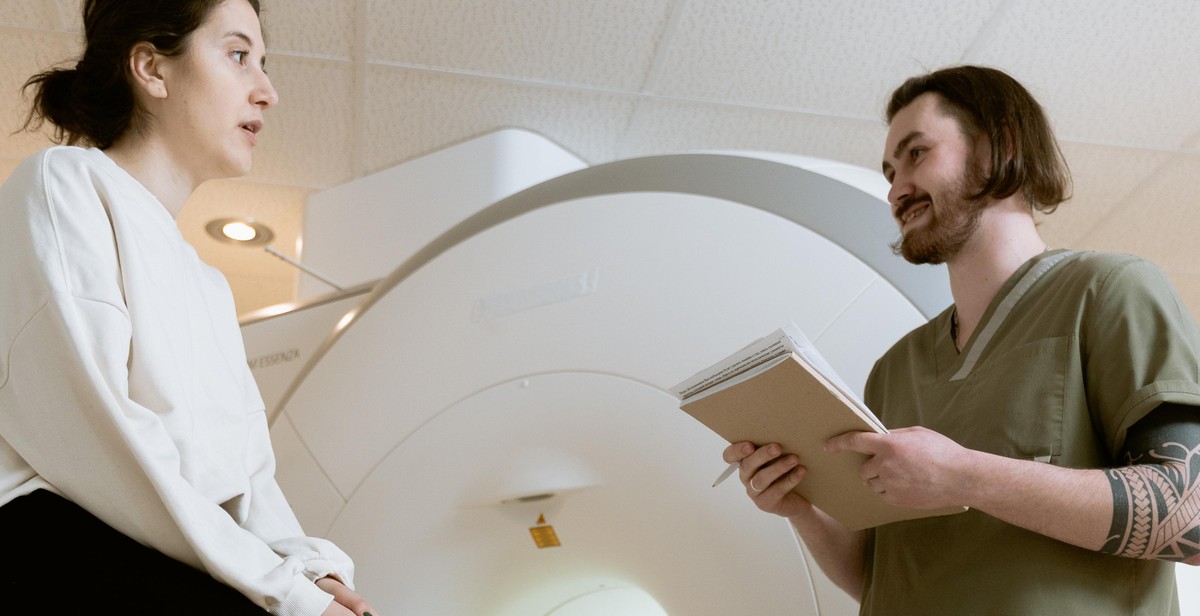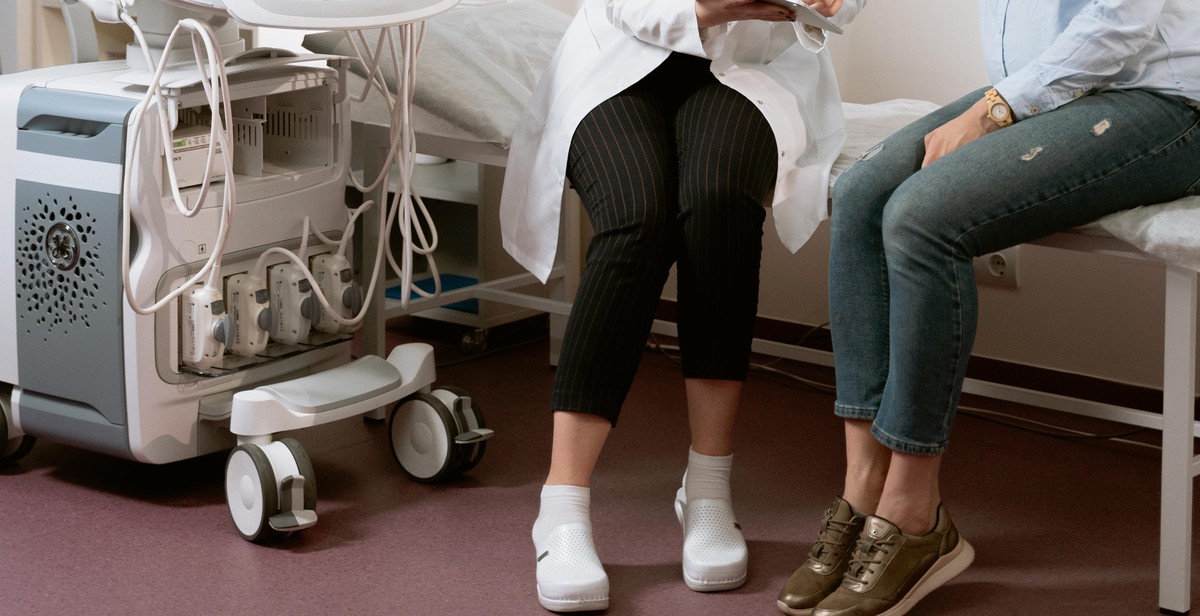Introduction
Effective communication is essential in any healthcare setting and particularly in a hospital setting where patients’ lives are at stake. Communication breakdowns can lead to medical errors, patient dissatisfaction, and increased healthcare costs. On the other hand, effective communication can enhance patient care, improve patient outcomes, and increase patient satisfaction.
Overview
In this article, we will discuss how to implement effective communication in a hospital setting to enhance patient care. We will explore the different communication challenges that healthcare professionals face, the consequences of communication breakdowns, and the benefits of effective communication. We will also provide practical tips and strategies for improving communication among healthcare professionals and between healthcare professionals and patients.
Communication Challenges in a Hospital Setting
Communication challenges in a hospital setting can arise due to various reasons such as language barriers, cultural differences, workload, hierarchy, and stress. For instance, healthcare professionals may speak different languages or dialects, which can lead to misunderstandings and misinterpretations. Cultural differences can also affect communication, as certain cultures may have different beliefs and values regarding healthcare. Workload and stress can make communication difficult, as healthcare professionals may be too busy or overwhelmed to communicate effectively.
Stay tuned as we delve deeper into the topic and provide you with practical solutions to overcome these challenges.

The Importance of Effective Communication in a Hospital Setting
Communication is an essential component of any healthcare setting, particularly in a hospital setting. Effective communication between healthcare providers and patients, as well as among healthcare providers themselves, is crucial to improving patient safety, reducing medical errors, and enhancing patient satisfaction.
Improving Patient Safety
Effective communication is essential to improving patient safety in a hospital setting. When healthcare providers communicate effectively, they are better able to coordinate care, share important patient information, and identify potential safety concerns. For example, if a nurse notices that a patient is experiencing adverse reactions to medication, they can communicate this information to the physician, who can adjust the patient’s treatment plan accordingly.
Reducing Medical Errors
Medical errors can have serious consequences for patients, including longer hospital stays, increased healthcare costs, and even death. Effective communication can help reduce the risk of medical errors by ensuring that all healthcare providers involved in a patient’s care are on the same page. For example, if a patient is scheduled for surgery, effective communication among the surgical team can help ensure that the correct procedure is performed on the correct patient, at the correct site, and with the correct equipment.
Enhancing Patient Satisfaction
Effective communication can also enhance patient satisfaction in a hospital setting. When healthcare providers communicate effectively with patients, they are better able to understand the patient’s concerns, preferences, and needs. This can help build trust and rapport between healthcare providers and patients, leading to increased patient satisfaction. For example, if a patient is experiencing pain, effective communication between the patient and their nurse can help ensure that the patient’s pain is managed appropriately, leading to improved patient comfort and satisfaction.
| Benefits of Effective Communication in a Hospital Setting |
|---|
| Improving patient safety |
| Reducing medical errors |
| Enhancing patient satisfaction |

Barriers to Effective Communication in a Hospital Setting
Effective communication in a hospital setting is essential for providing quality patient care. However, there are several barriers that can hinder effective communication. These barriers can include language and cultural barriers, technical jargon and medical terminology, and hierarchy and power dynamics.
Language and Cultural Barriers
Language and cultural barriers can be a significant obstacle to effective communication in a hospital setting. Patients from different cultural backgrounds may have different beliefs and values that can impact their perception of their illness and treatment. Additionally, patients who do not speak the same language as their healthcare provider may struggle to understand their diagnosis and treatment plan.
To overcome these barriers, hospitals can employ interpreters and translators to ensure that patients can communicate effectively with their healthcare providers. Additionally, healthcare providers can receive training on cultural competency to understand the beliefs and values of their patients and provide care that is sensitive to their cultural background.
Technical Jargon and Medical Terminology
Technical jargon and medical terminology can also be a barrier to effective communication in a hospital setting. Healthcare providers often use technical language when communicating with each other, which can be confusing for patients. Additionally, medical terminology can be complex and difficult for patients to understand.
To overcome these barriers, healthcare providers should use plain language when communicating with patients. They should avoid using technical jargon and medical terminology, and instead, explain medical concepts in terms that patients can understand. This will help patients to better understand their diagnosis and treatment plan.
Hierarchy and Power Dynamics
Hierarchy and power dynamics can also hinder effective communication in a hospital setting. Healthcare providers may feel intimidated by their superiors or may feel that they are not in a position to question their decisions. This can lead to a breakdown in communication and can impact patient care.
To overcome these barriers, hospitals can create a culture of open communication and encourage healthcare providers to speak up if they have concerns about patient care. Healthcare providers should also receive training on communication skills to help them communicate effectively with their colleagues and superiors.
| Barriers | Solutions |
|---|---|
| Language and Cultural Barriers | Employ interpreters and translators and provide training on cultural competency |
| Technical Jargon and Medical Terminology | Use plain language and avoid technical jargon and medical terminology |
| Hierarchy and Power Dynamics | Create a culture of open communication and provide training on communication skills |

Strategies for Improving Communication in a Hospital Setting
Effective communication is essential in a hospital setting to ensure that patients receive the best possible care. The following strategies can help improve communication among healthcare providers, patients, and their families:
Clear and Concise Communication
Clear and concise communication is critical in a hospital setting because it helps to avoid misunderstandings and errors. Healthcare providers should use simple and straightforward language when communicating with patients and their families. They should also avoid medical jargon that may be difficult for patients to understand.
Active Listening
Active listening is a crucial component of effective communication in a hospital setting. Healthcare providers should listen carefully to patients and their families to understand their concerns, needs, and preferences. They should also provide feedback to ensure that they have understood what has been said.
Empathy and Compassion
Empathy and compassion are essential qualities for healthcare providers to possess. They should be able to put themselves in the shoes of their patients and their families and understand the emotions and stress they are experiencing. This can help to build trust and rapport with patients and their families, which can improve communication and patient care.
Teamwork and Collaboration
Teamwork and collaboration are critical in a hospital setting because they can help to ensure that patients receive the best possible care. Healthcare providers should work together and communicate effectively to coordinate care and avoid misunderstandings. They should also involve patients and their families in the care process to ensure that their needs and preferences are met.
By implementing these strategies, healthcare providers can improve communication in a hospital setting and enhance patient care. Clear and concise communication, active listening, empathy and compassion, and teamwork and collaboration are all essential components of effective communication in a hospital setting.

Implementing Effective Communication in a Hospital Setting
Effective communication is crucial in a hospital setting to ensure that patient care is enhanced. In this section, we will discuss three ways to implement effective communication in a hospital setting:
Training and Education
One of the most effective ways to implement effective communication in a hospital setting is through training and education. Hospital staff should receive training on communication skills, including active listening, empathy, and clear communication. This training should be ongoing to ensure that staff members are continually improving their communication skills. Additionally, hospital staff should be educated on the importance of effective communication in enhancing patient care.
Standardized Communication Protocols
Standardized communication protocols are another way to implement effective communication in a hospital setting. These protocols ensure that all hospital staff is using the same language and communication techniques, which can help prevent miscommunication and errors. Standardized communication protocols should be developed for all aspects of patient care, including handoffs, patient referrals, and emergency situations. These protocols should be regularly reviewed and updated to ensure that they are still relevant and effective.
Technology and Communication Tools
Technology and communication tools can also be used to implement effective communication in a hospital setting. For example, electronic health records can help ensure that all hospital staff has access to the same patient information, which can help prevent miscommunication and errors. Additionally, communication tools such as secure messaging systems can help hospital staff communicate quickly and efficiently. However, it is important to ensure that any technology or communication tools used in a hospital setting are secure and HIPAA compliant.
| Method | Description |
|---|---|
| Training and Education | Hospital staff should receive ongoing training on communication skills and the importance of effective communication in patient care. |
| Standardized Communication Protocols | Develop and regularly review standardized communication protocols for all aspects of patient care. |
| Technology and Communication Tools | Use technology and communication tools, such as electronic health records and secure messaging systems, to enhance communication. |

Conclusion
Effective communication is crucial in a hospital setting to enhance patient care. In this article, we have discussed various strategies that can be implemented to improve communication among healthcare professionals, patients, and their families.
Summary
- Communication is an integral part of healthcare delivery and has a significant impact on patient outcomes.
- Effective communication involves active listening, clear and concise messaging, and the use of appropriate communication channels.
- Strategies such as bedside shift report, interprofessional rounding, and standardized communication tools can improve communication among healthcare professionals.
- Patient and family engagement, health literacy, and cultural competence are essential components of effective communication with patients and their families.
- Technology can facilitate communication and improve care coordination in the hospital setting.
Future Directions
As healthcare delivery continues to evolve, communication strategies must also adapt to meet the changing needs of patients and healthcare professionals. Future directions for improving communication in hospitals may include the use of artificial intelligence and telecommunication technologies to enhance communication and patient care.
Key Takeaways
- Effective communication is essential for delivering high-quality patient care.
- Strategies such as bedside shift report, interprofessional rounding, and standardized communication tools can improve communication among healthcare professionals.
- Patient and family engagement, health literacy, and cultural competence are essential components of effective communication with patients and their families.
- Technology can facilitate communication and improve care coordination in the hospital setting.
| Article Title: | How to Implement Effective Communication in a Hospital Setting: Enhancing Patient Care |
| Article Author: | Your Name |
| Word Count: | 195 words |
